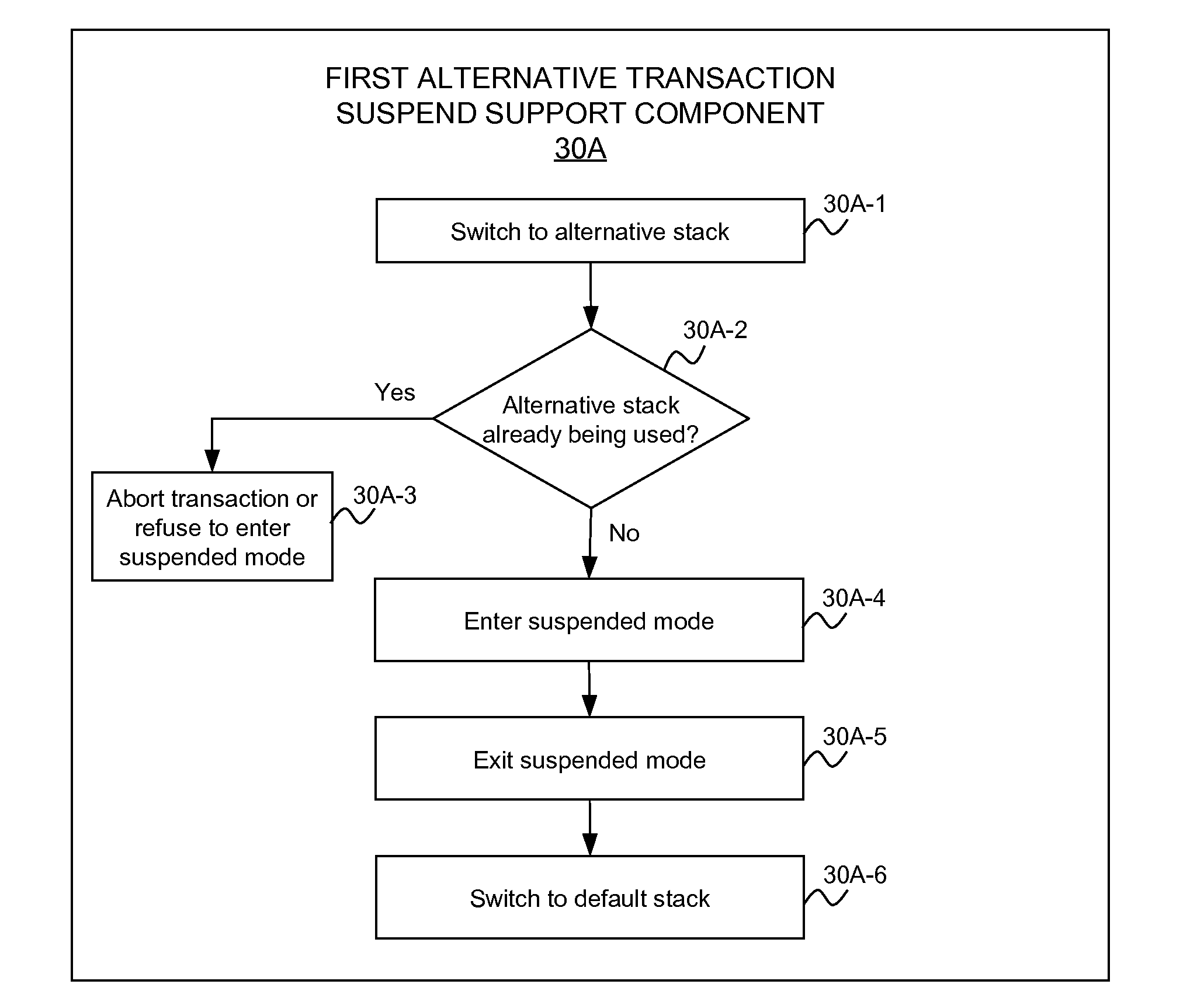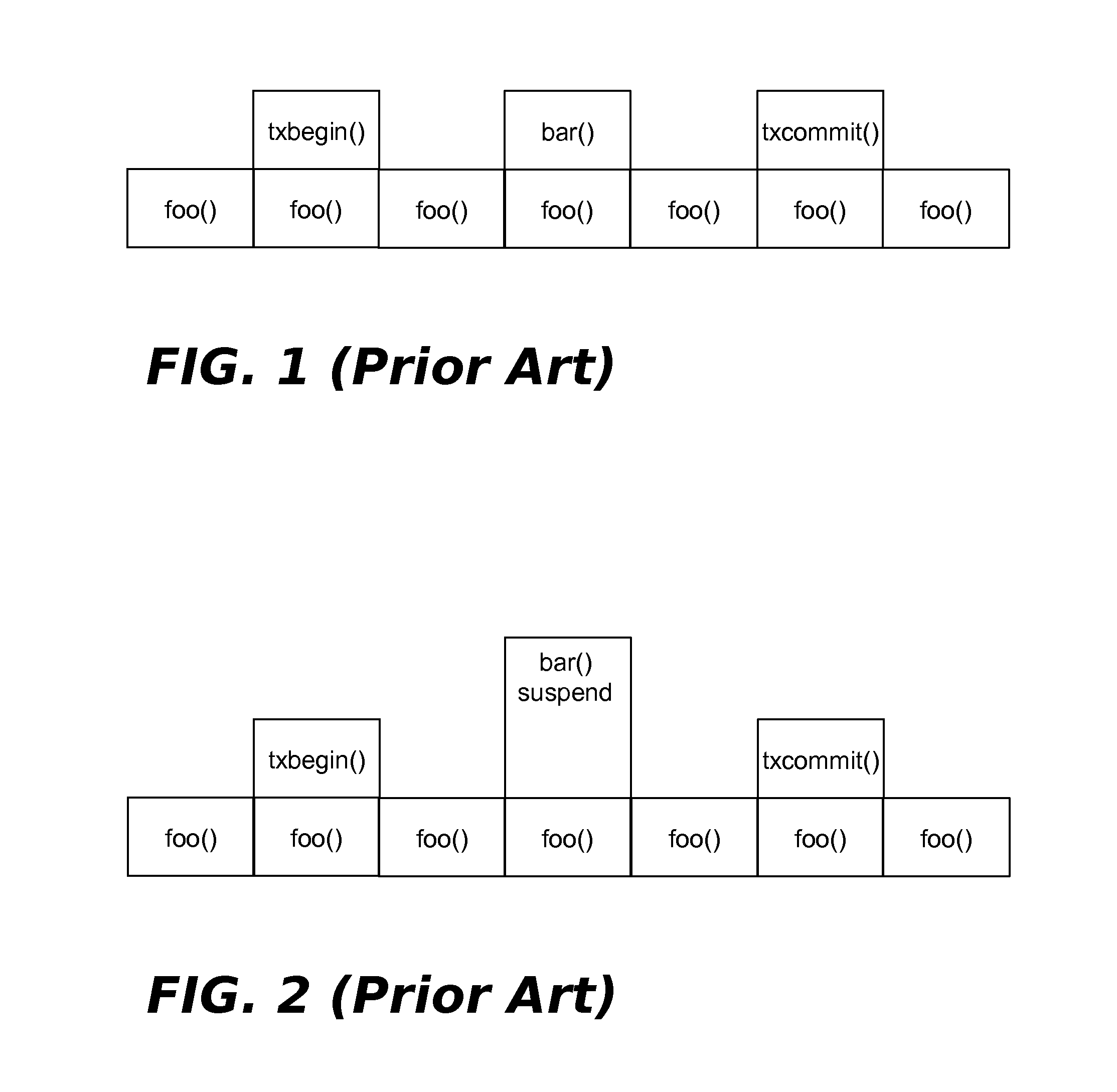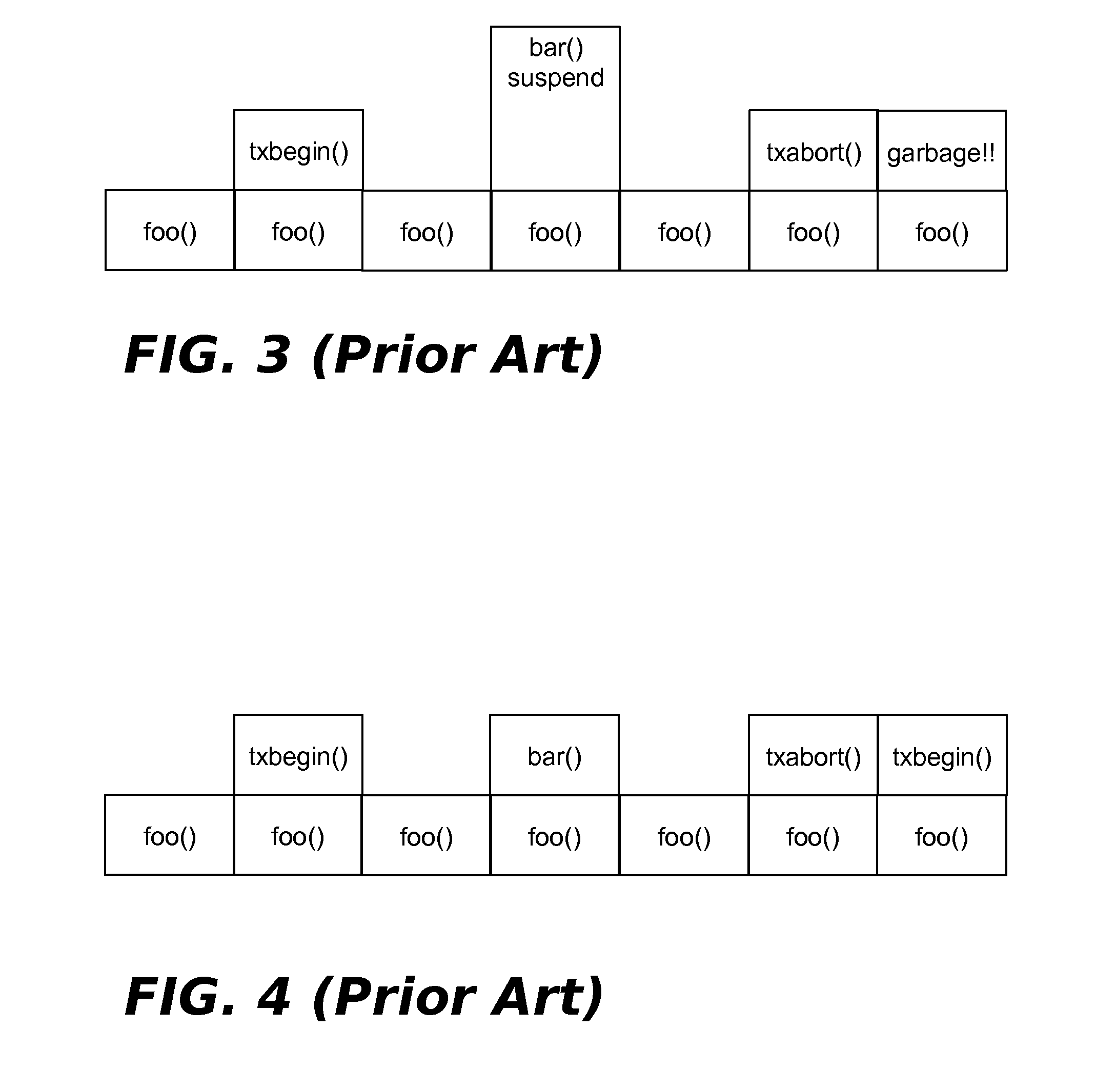Suspending Transactional-Memory Transactions Without Stack Corruption
a transactional memory and stack corruption technology, applied in the field of computer systems and methods, can solve the problems of hardware implementations not being able troublesome foregoing limitation, and general inability to distinguish between memory private to a given cpu
- Summary
- Abstract
- Description
- Claims
- Application Information
AI Technical Summary
Benefits of technology
Problems solved by technology
Method used
Image
Examples
Embodiment Construction
[0030]Turning now to the figures, wherein like reference numerals represent like elements in all of the several views, FIG. 5 illustrates an example computer system 2 that may be used to implement the technique disclosed herein. Although the computer system 2 is shown as being a multiprocessor system, a uniprocessor computer system could also be used. The computer system 2 includes a plurality of processors 41, 42 . . . 4n, a system bus 6, and a program memory 8. There is also cache memory that includes cache memory instances 101, 102 . . . 10n, and corresponding cache controllers 121, 122 . . . 12n, respectively associated with the processors 41, 42 . . . 4n. A memory controller 14 is associated with the memory 8. As shown, the memory controller 14 may reside separately from processors 42 . . . 4n (e.g., as part of a chipset). Alternatively, the memory controller 14 could be provided by plural memory controller instances respectively integrated with the processors 42 . . . 4n (as i...
PUM
 Login to View More
Login to View More Abstract
Description
Claims
Application Information
 Login to View More
Login to View More - R&D
- Intellectual Property
- Life Sciences
- Materials
- Tech Scout
- Unparalleled Data Quality
- Higher Quality Content
- 60% Fewer Hallucinations
Browse by: Latest US Patents, China's latest patents, Technical Efficacy Thesaurus, Application Domain, Technology Topic, Popular Technical Reports.
© 2025 PatSnap. All rights reserved.Legal|Privacy policy|Modern Slavery Act Transparency Statement|Sitemap|About US| Contact US: help@patsnap.com



